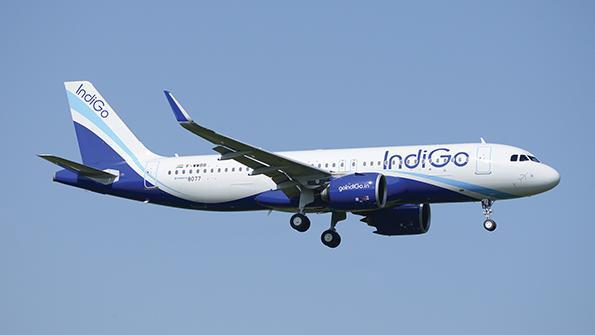
Three Indian airlines ordered a combined 974 aircraft at the Paris Air Show. While this news dominated headlines, India’s underlying infrastructure and aftermarket needs are equally interesting.
New Delhi-based IndiGo’s order for 500 A320neos at the air show gained a bit more clarity on July 7 when Airbus announced its June tallies. IndiGo plans to take 375 A321neos and 125 A320neos, but an asterisk in the OEM’s June orders and deliveries table says the “final split between the A320neo and A321neo is to be defined at a later stage.” The carrier said it will make its engine selection “in due course.”
IndiGo, which began operations in 2016, flies 264 A320-family aircraft. With the Paris order announcement, its orderbook swells to 830 aircraft. The airline has two MRO facilities at Kempegowda International Airport in Bengaluru. The latest, a 13,000-m2 (140,000-ft.2) hangar opened last November, accommodates two narrowbodies.
The day after IndiGo’s big news, Air India confirmed orders for 470 aircraft worth $70 billion at list prices. The firm orders include 140 A320neos, 70 A321neos, 34 A350-1000s and six -900s as well as 190 Boeing 737 MAXs, 10 777Xs and 20 787s. Aviation Week Executive Editor for Commercial Aviation Jens Flottau noted: “The now-privatized airline is in the middle of a fundamental transformation that will see it merge the four airlines in the group to two and rebuild the operation to a much larger size” (AW&ST July 3-16, p. 14).
As part of the transformation, Air India selected support services from both Airbus and Boeing. Airbus will provide material management services through Satair, and Air India will be the launch customer for Airbus’ Skywise Core X3 analytics platform. Boeing will provide a managed parts program, an interiors upgrade for its existing 787s, 737 MAX pilot training and crew scheduling tools.
The third airline order came from Mumbai-based Akasa Air, which selected four more 737 MAX 8s. The airline’s CEO says he expects to place a “significant three-digit aircraft order” by year-end. Star Air, an all-Embraer jet operator based in Bengaluru, didn’t announce fleet expansions but did sign a long-term parts pooling contract with Embraer for its E175s.
To support growth, India “is expected to increase its [airports] from 148 today to 220 by 2025,” says Sumesh Patel, SITA’s president for Asia-Pacific, in a statement about its July 7 contract with the Airports Authority of India.
While saying India is poised for growth almost seems like an understatement, flash back to 2008 when planned MRO facilities—such as the one between Lufthansa Technik and GMR—fell through. Although the tax and customs structure has improved, an Asia-based source says: “The lack of clarity on the GST [goods and services tax] remains a dampener for the investors.”
For example, if MRO services, including replacement parts and components, “are considered ‘services,’ it will make the business viable, as it would attract a flat 5% GST,” he says. “But if broken into supply and services, it will not, as the supply of components and parts will attract up to 28% GST.”
Aviation’s growth in India isn’t an overstatement, but some details need to be worked out on the MRO front.





